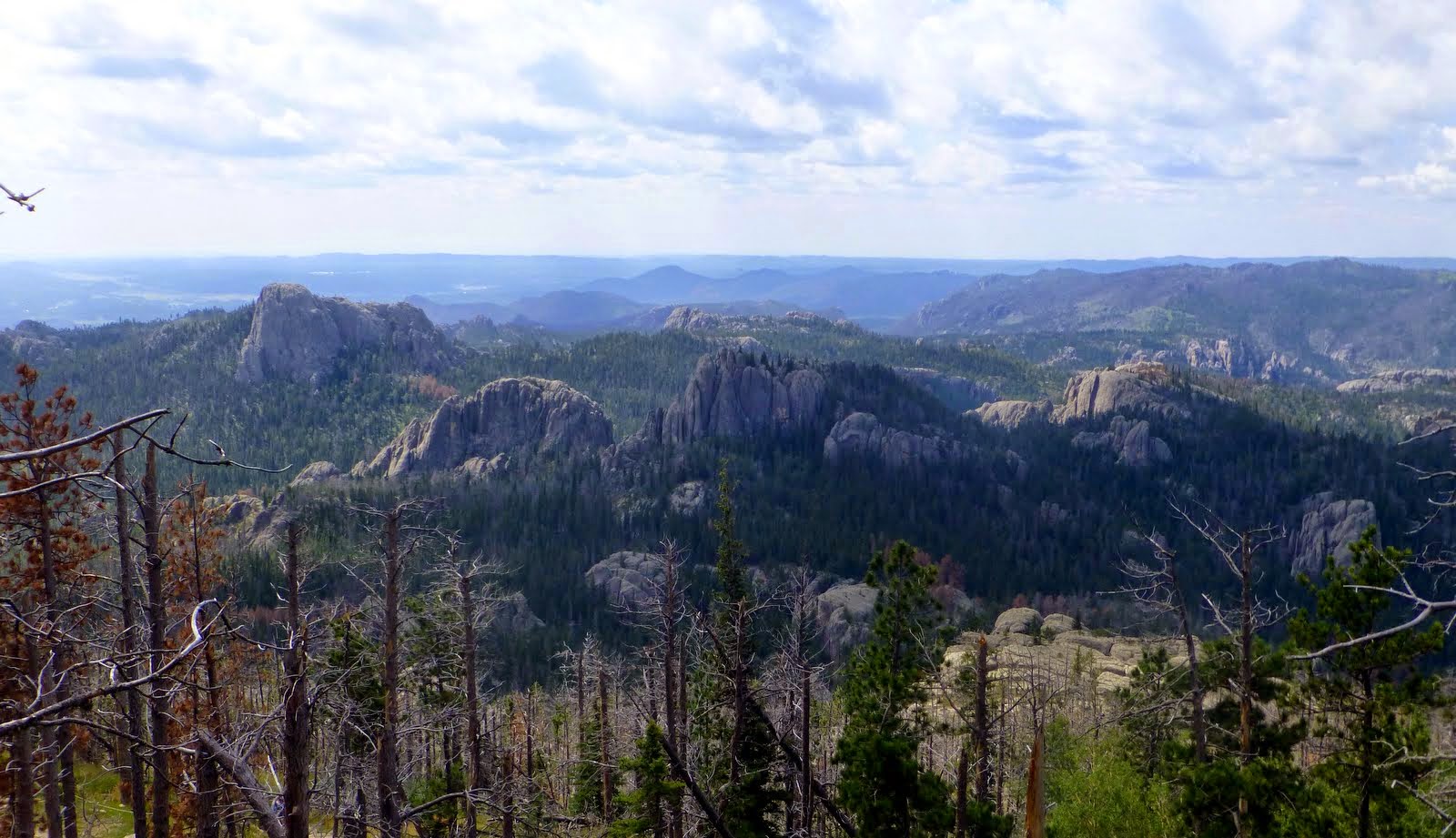Custer State Park amazed and thrilled us. Truly a park of Nature's Playground -- wildlife herds reminiscent of the old west, scenic drives with narrow (one way) tunnels, rock spires, mountain lakes, and Mt Harney Peak (tallest mountain (7,242 feet) east of the Rockies).
Custer State Park is celebrating the 100th anniversary of their purchase in 1914 of 36 bison to start the park's herd. (Today's herd is maintained at 1,500.) The Plains Indians called the bison Tatanka -- the giver of all they needed for life. And so the park honors this heritage.
The Park was the summer White House for President Calvin Coolidge in 1927.
We drove sections of the Peter Norbeck Scenic Byway from Custer State Park up and through Mt Rushmore. This road includes some of the most dramatic natural and historic features in the Black Hills. The stunning section is the Iron Mountain Road. Norbeck, a Governor, US Senator, and early conservationist from South Dakota, envisioned a road in the Black Hills to show case the unique beauty of the area.
He hiked and rode (horse back) to find the most scenic route. The challenge in the 20 mile Iron Mountain Section: 3 tunnels and a corkscrew spiral road to connect the tunnels without adding miles to the journey. And the tunnels aligned to frame Mt Rushmore. The road opened in 1933 -- and is still wowing drivers!
His philosophy: You are not supposed to drive here at 60 miles an hour. To do the scenery half justice, people should drive 20 or under; to do it full justice, they should get out and walk.



















































